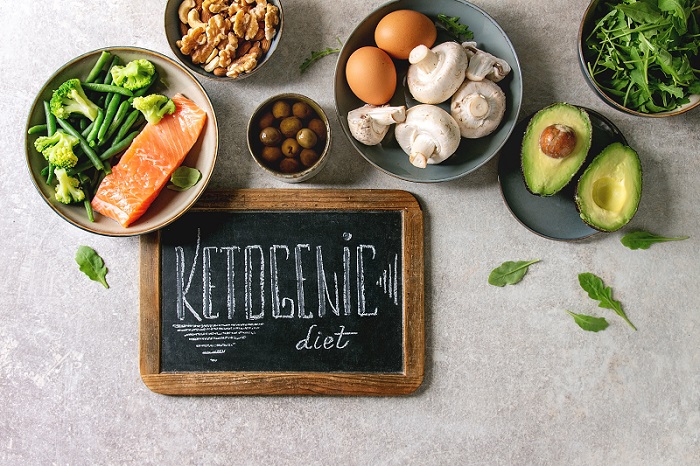WHAT IS KETO ADAPTATION AND HOW DOES IT WORK?

The ketogenic diet involves reducing carbohydrate intake while increasing fat intake. It is based on the principle that eating fat burns fat. It is a type of low-carbohydrate diet, which is used, for example, by people who want to lose weight. The key is a period of adaptation to the new way of eating, during which unpleasant symptoms may occur. However, after the adaptation period is over, most people start to feel better than before they started the diet. What is the adaptation and what foods should be eaten on a ketogenic diet?
Adaptation to ketosis
Adaptation to ketosis takes 2 to 4 weeks, but it is advisable to do it for 4 weeks. During this period carbohydrates should be reduced by 20 g each day and protein by 1-1.5 g per kg body weight. The remainder of the energy requirement comes from fat. The key role is to supplement potassium, magnesium, sodium and B vitamins, which are essential for the proper functioning of the muscular and nervous systems. Why is this important? Because with the reduction of carbohydrates, the body excretes water reserves and uses up glycogen from muscles and liver. This also leads to a loss of valuable elements and vitamins.
Due to the low amount of carbohydrates in the diet, the body draws energy from glycogen in the initial phase, and only in the later phase begins to obtain it from fat. During this period there is a deficit of minerals, which must be supplemented to prevent the so-called keto flu. This condition is characterized by headaches, constipation, diarrhea, abdominal pain, sleep disorders, irritability and poor concentration. However, you should be aware that everyone’s body reacts differently to a change in diet. Some people adapt more quickly, while others more slowly. Be sure to drink plenty of water and salt your meals. Signs that your body has adapted to the keto diet include:
- No or significantly reduced feelings of hunger;
- Improved concentration;
- improved mood;
- absence of symptoms of keto flu (if it has occurred);
- improved sleep;
- more energy.
After 4 weeks, when the keto adaptation is complete, the number of carbohydrates can be increased to 40 g per day, but do not exceed this value. During this period, you must be careful not to consume excess carbohydrate products, as this could “throw” your body out of ketosis.
Products for keto adaptation
For some people, the ketogenic diet causes a complete change in diet. Allowed foods in keto adaptation that you should eat are:
- meat: bacon, pork knuckle, ribs, beef, pork neck and offal (liver, hearts, gizzards);
- fish: herring, salmon, mackerel, sardines and carp;
- seafood: shrimp, caviar, crawfish, crab, octopus and squid;
- vegetables: zucchini, spinach, broccoli, cauliflower, peppers, sauerkraut, cherry tomatoes, mushrooms, lettuce, garlic, asparagus, pickled cucumbers, and eggplant;
- fats: MCT oil, clarified butter, coconut oil, lard, olive oil, goose and duck lard;
- dairy: eggs, cream cheese, 30% cream, blue cheese, mascarpone, mozzarella and Parmesan cheese;
- Nuts and seeds: almonds, nuts (walnuts, Brazil nuts, hazelnuts), sunflower seeds and pumpkin seeds;
- flours: almond, coconut and sesame;
- sweeteners: erythritol and stevia;
- fruits: berries (blueberries, strawberries, raspberries, blackberries, red currants) and avocados.
Keto adaptation – menus
A sample daily menu that can be used for the ketogenic diet:
- Breakfast: scrambled with 2-3 eggs on bacon and topped with chives and tomatoes.
- Quick snack: a glass of smoothie made from a handful of strawberries and coconut milk.
- Lunch: fried chicken liver with cream sauce with mushrooms (liver can be replaced by hearts or gizzards).
- Afternoon snack: chopped vegetables (celery, cucumber, tomato and bell pepper) mixed in natural yogurt with garlic.
- Dinner: shrimp stewed in clarified butter with chives and green salad.
Ketogenic diet provides excellent results in weight loss and can be used in the prevention of many diseases, including diabetes. Proper management during the adaptation period allows the body to safely switch to extracting energy from fat and thus reduce weight.
@ketopresident
JKG



